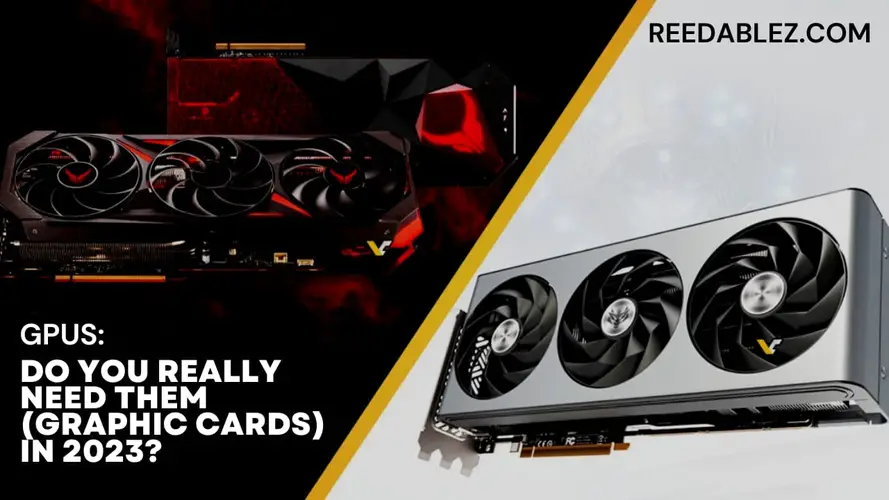How to Test a Motherboard for Faults? Must have I…
April 14, 2018

To know whether you need a state-of-the-art, high-performance, and highly sophisticated GPU or not; ask yourself these simple questions given below.
If you are not any of these personnel but rather just a regular computer user, then relax as you don’t have to get bothered by the whole discussion of GPUs.
If you are any of these, you probably need to pay attention to something called GPUs. Let’s start with answering a simple question what are the Graphic Processing Units (aka GPUs)?
What are graphic cards and what does it do?
Graphic Processing Units are a component of computer hardware. People also called them, simply Graphic Cards or Video Cards. The idea of Graphic Cards/ Video Cards might seem new to you; actually, it is. But you could think of it as a specialized and powerful CPU; as the idea of a CPU might be relevant to most of us.
In simple words, GPU would control the quality of game visuals, graphic designs, sketches, animation, your architectural design, and the simulation of your engineering project irrespective of whether they are static (still, without motion) or dynamic (with any sort of motion).
Here pops a very simple question, what parameters would be the index of the GPU quality and performance? What makes a GPU, a good GPU? What makes a GPU, the best GPU?
Here are some practical definitions and explanations of these performance indices to help you guys to make informed decisions every time purchasing a GPU. Broadly, there are just two parameters; Display Port and RAM. Let’s discuss them, one by one.
It is a physical connection point on the GPU that got connected to your display setup. It is the single GPU feature that controls everything that you need for better visualization of your sketches, drawings, models, simulations, photos, and videos; in short, for the visualization of anything that you create. It controls the frame size (also called resolution, and determines the quality of still graphics), and frame rate (determines the smoothness of the moving visuals; all of these are pivotal to the visualization and resultantly to collaborations in the business settings.
You might have seen something like 8k60. It is the frame size and the frame rate written together. Normally, frame size and frame rate are collectively written as N1kN2. N1k represents frame size (called resolution) and N2 represents the frame rate (also called frame frequency). So, 8k60 could be inferred as an 8k frame size with a 60-frame frequency.
Resolution controls the image quality and blurring effect, while on the other hand, frame rate controls the smoothness of the transitions, especially in the simulations and animations. High resolution gives maximum image quality and minimum blurring effect. A high Frame rate gives nonstop smooth transitions and an immersive experience.
Under the major head of RAM, usually, the manufacturing companies describe the GPUs in terms of similar but interdependent parameters given below.
For a given GPU, its memory interface and memory bandwidth are always smaller than the memory space. Thus, you can never have a GPU that offers more memory interface and memory bandwidth than the memory space.
Imagine, you have a big water reservoir, and small channels are made out of it; a Big water reservoir is your memory space (or memory size), and an individual small channel makes the memory interface while all these small channels collectively constitute memory bandwidth.
Although the size of the reservoir matters, the total water being drawn at a moment (in our example, it is the bandwidth) from the reservoir reflecting the data flow, would be the most critical parameter after the total memory space. That is why, while making choices between different GPUs, if two different GPU models offer two different memory spaces, you should always go for the one that offers more memory space. And, if two different GPU models are offering the same memory space, you might need to check for the memory bandwidth as well and choose the one that offers memory bandwidth.
Memory Cache is like an extra little RAM; it’s good to have it but this parameter is always secondary. Because, if you didn’t have adequate main RAM, what are you gonna do with this little additional RAM? It would be good if you had more of it.
A GPU with a big RAM, big Bandwidth, and big Cache would be an ideal GPU that would enable you to perform complex and heavy tasks, like making sketches, drawings, models, and simulations, and editing photos, videos, and movies, professionally at an industrially-paced speed with enabled multi-tasking.
These two parameters, i.e., Display Port and RAM, determine the overall quality and performance of any GPU. In other words, only these two parameters decide whether a GPU is a good one or a bad one.
GPU is not a need for every computer user; only some designated personnel include gamers,professional graphic designers, professional video editors, professional animators, professional movie artists, professional architects, and professional engineers who frequently do gaming,graphic designing,video editing,animation,movie editing,modeling,designingandsimulationson regular basis, really need a good GPU. So, for all these personnel looking for a decent GPU, we have explained two major parameters in detail that can be used as an index of the GPU quality and performance to help you make an informed decision while buying a good GPU. Their performance indices include the Display Port and the Random Access Memory (RAM). The Display Port will give you better visualization of what you create while RAM allows you to perform complex computational tasks rapidly even in multitasking mode.
Now, that you know what to exactly look for in a GPU while buying it, the next blog would be about “How does an ideal GPU look like?”. So, stay tuned!
Comments
Rehman
ماشاء اللہ
shakaib Butt
MashaAllah
shakaib Butt
MashaAllah
Write a comment